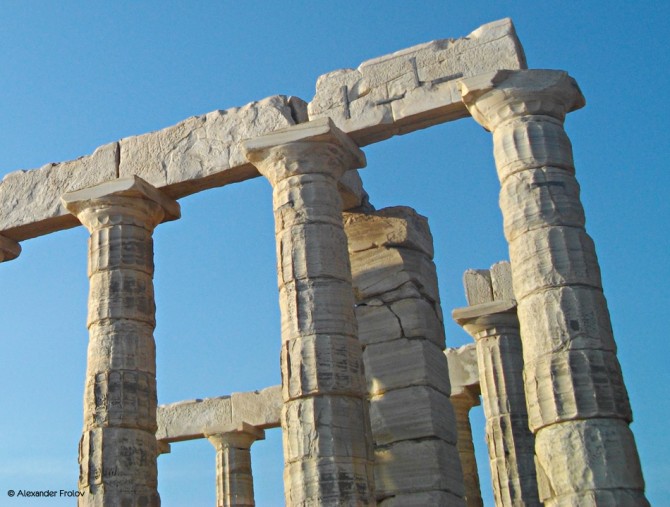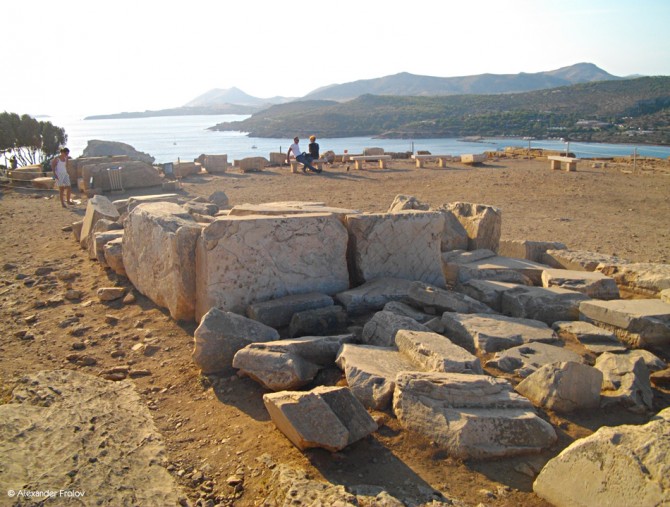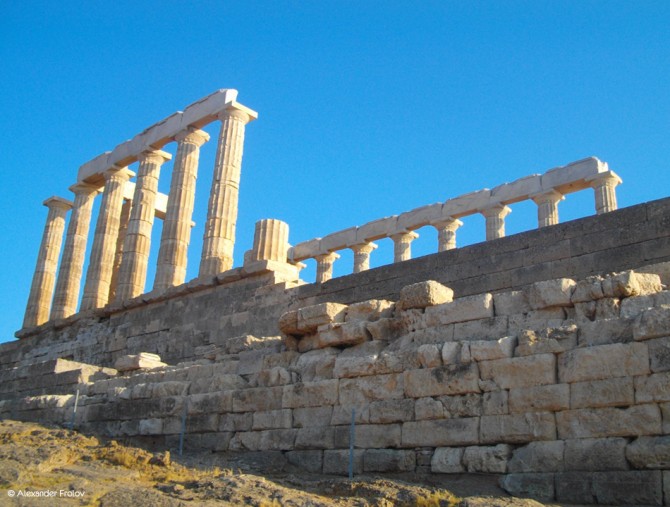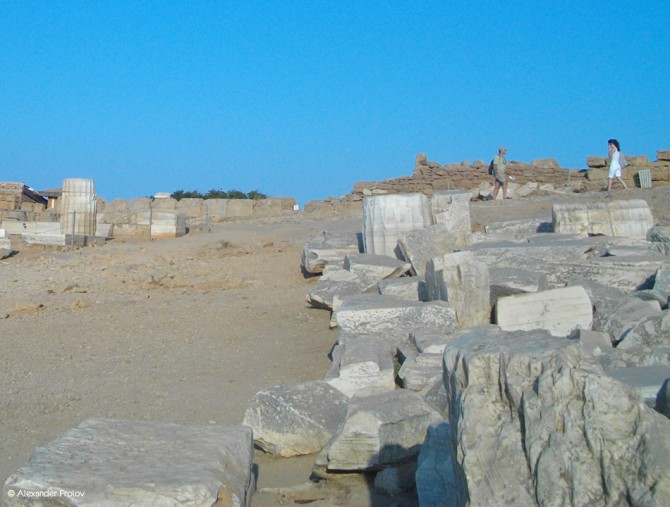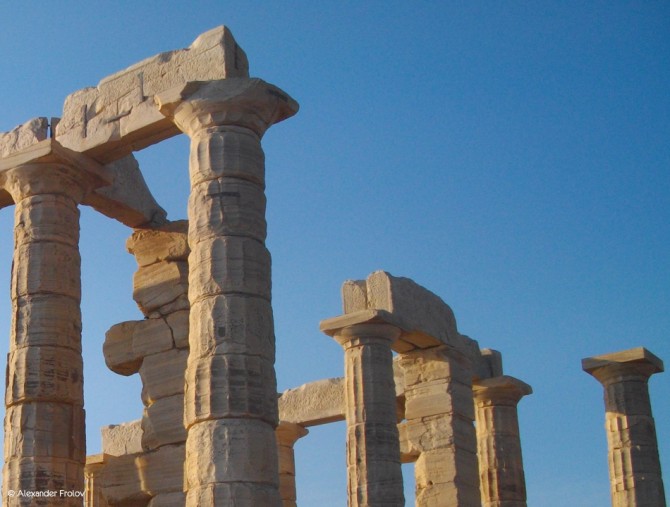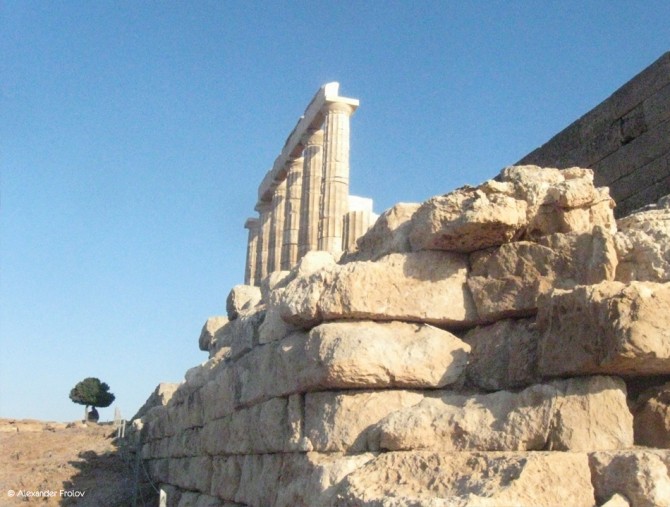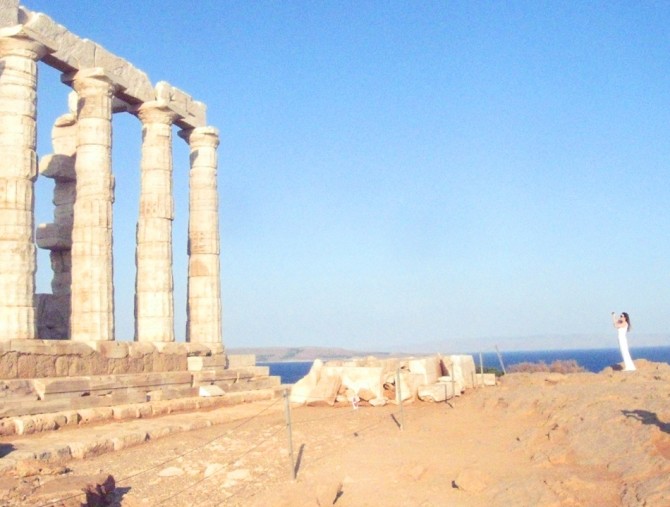Храм Посейдона на мысе Сунион
Храм Посейдона на мысе Сунион - одно из важнейших святилищ в Аттике. Сунион был населён с глубокой древности, и уже в тогда был местом священным, средоточием двух культов —Афины и Посейдона, вечно соперничавших за обладание Аттикой. Мыс упомянут в “Одиссее” Гомера. Святилище Посейдона было построено на вершине скалы в 490 году до н.э., в год Марафона, и разрушено в 480 году до н. э.., в год Фермопил и разорения Аттики. Известно, что это был дорический периптер (6 на 13 колонн). Классический храм Посейдона, развалины которого сохранились до сих пор, был построен к 440 до н.э. и был действующим по крайней мере до 1 века нашей эры. Архитектуру храма (также дорический периптер) приписывают создателю Храма Гефеста в Афинах и Святилищу Немезиды в Рамнунте. Размеры колоннады — 13,47 на 31,12 метра. Со скалы открывается очень живописный вид. Согласно мифологии, именно с этой скалы бросился Эгей, когда увидел корабль с чёрными парусами (Тесей хоть и победил Минотавра на Крите и избавил греков от ужасной дани, но забыл поменять паруса).
Добраться сюда можно на автобусе (маршрут Athens - Sounion Mesogeiakos) от станции Pedion Areos, расположенной рядом со станцией метро Виктория, ул. Mavromateion, цена билета в один конец 5,70 евро, время в пути 2 часа, с 5-45 по 18-45. От той же станции идет автобус (маршрут Athens - Sounion Paraliakos) - все тоже самое, только по берегу моря, цена билета 6,30 евро, время в пути тоже самое, с 6-30 по 19-30.
Фото и текст: Александр Фролов
The Temple of Poseidon
The temple of Poseidon at Cape Sounion is one of the most important sanctuaries in Attica. For the record, Poseidon was one of the greatest gods of the ancient Greeks, the God of the sea. The story has it that the construction of this glorious temple started in the place of a posterior temple, at the same time with the construction of the Parthenon, in 444 BC, and was completed 4 years later. Although the name of the architect is unknown, it is presumed that it is the same person who designed the Temple of Hephaestus in Athens. The new temple was Dorian style, with six columns on the short sides and thirteen on the long sides (6x13). The length was 31,12 meters and the width, 13,47 meters. It was divided into three parts: the vestibule, the nave, with the statue of the god and the “opisthodomos”, in which they kept the offerings and the “poseidonium money” from the mines of Laurium. The vestibule and the “opisthodomos” ended in two columns between pilasters, and they were separated from the nave by a wall. A special feature of the temple was the lack of internal colonnade of the cella. Another novelty was the number of the ribs on the columns, which were 16 instead of the usual 20. The sculptures were made of Parian marble and their themes were the Battle of the Giants, the Centauromachy and the feats of Theseus. Due to the adverse weather conditions, most of the reliefs are worn. The ones that have survived are kept at the Museum of Lavrion. In the classical and Hellenistic period (5th-2nd century BC) the temple was very busy. Every four years brilliant celebrations were organized, in which the official sailed with “theorida nafn” (kind of boat) as in the sanctuary of Delos. The sanctuary was abandoned with the decline of the ancient religion and the temple was gradually ruined.
The Temple of Poseidon, Cape Sounion, Attica. Visiting hours: Winter: 9:30-sunset. Summer: 8:00-sunset. Ticket prices: (Full) 4 euros, (Reduced) 2 eyros.
How to get there: By car from Athens (distance 74,3 km) via Attiki Odos/A6 and Lavriou Avenue. By bus from Athens. Starting point: Mavromataion street, Pedion tou Areos (busline 15, bus stop Dikastiria), tel.: +30 210 880 80 81. Itineraries: 6:30-16:30, every 2 hours.


